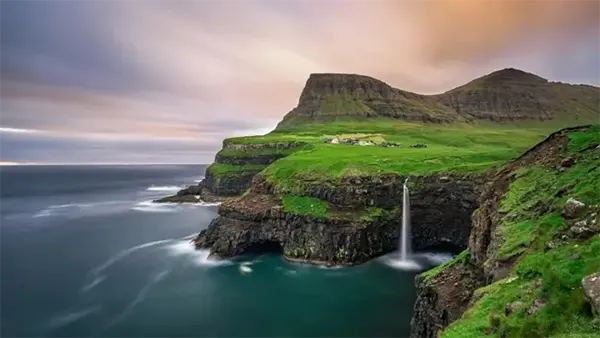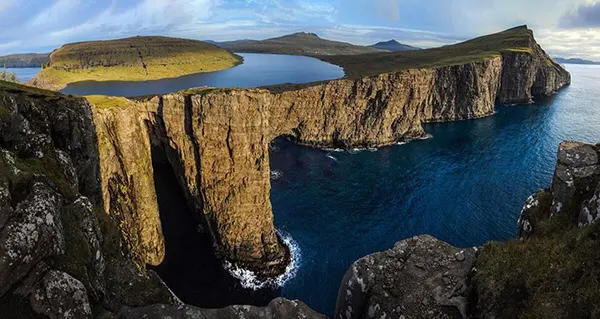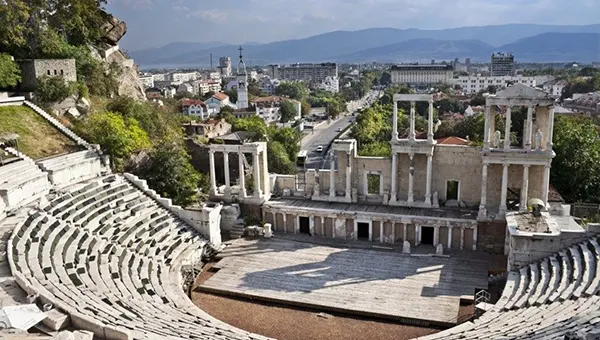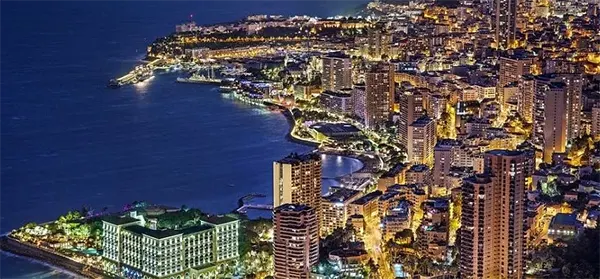
Faroe Islands: Hiking to Trælanípa and Tea Overlooking Waterfalls
The Faroe Islands, a remote archipelago in the North Atlantic Ocean, offer a rare blend of solitude, dramatic landscapes, and unique cultural experiences. February 2025 is an ideal time to explore this isolated gem, especially the breathtaking hike to Trælanípa and the serene joy of sipping tea with a view of cascading waterfalls. This article provides a comprehensive guide to this adventure, highlighting essential travel tips, local cuisine, and the unmatched tranquillity of the Faroese wilderness.
Hiking to Trælanípa: A Cliff with a Dark Past
Trælanípa, also known as Slave Cliff, is one of the Faroe Islands’ most iconic sights. The cliff towers 142 metres above the sea and provides a stunning optical illusion — the lake Leitisvatn appears to hover above the ocean. This phenomenon attracts photographers, hikers, and nature lovers from all over the world, though its historical background adds a sobering contrast to its beauty.
The name “Trælanípa” dates back to the Viking Age. According to local lore, disobedient slaves were pushed from the edge of this cliff into the sea. The grim past now gives way to peaceful treks and awe-inspiring views. The hike begins near the village of Miðvágur and takes around 1.5 hours round trip across gently undulating terrain, with panoramic views along the way.
In February, expect light snow and strong winds. Waterproof clothing and proper hiking boots are essential, and it is advisable to check weather conditions before setting off. Since daylight is limited this time of year, starting early in the day ensures a safer return.
Leitisvatn Lake and Sørvágsvatn: Nature’s Illusion
Leitisvatn, also called Sørvágsvatn, is the largest lake in the Faroe Islands and plays a visual trick on the eye when viewed from Trælanípa. The lake appears to be levitating high above the ocean, due to the sloping perspective of the cliffs. It’s a surreal sight — one that makes the relatively easy hike well worth the effort.
Along the way, you’ll pass windswept grasslands and seabirds circling above the Atlantic. While it might not be tourist-heavy in February, the path is clearly marked, and local guides are available for those who prefer a more structured experience.
Photography enthusiasts should bring a wide-angle lens and a tripod to capture the illusion at its best. The cliff’s edge provides numerous safe vantage points for dramatic shots without needing to venture too close to the drop.
Tea with a View: Waterfalls and Wind-Scoured Valleys
After completing the hike, one of the most tranquil experiences is enjoying a warm cup of tea near the cliffs or waterfalls in the area. The Múlafossur Waterfall in Gásadalur is a prime location for this. This spectacular waterfall flows from the cliffs directly into the ocean, and the village nearby provides shelter from the ever-present wind.
In February, this setting is especially serene. Snow might dust the rooftops of the tiny houses in Gásadalur, while the roaring water of Múlafossur creates a soothing background sound. A thermos of herbal tea and a seat on a dry rock can turn this moment into a quiet, meditative break from the world.
There are no cafes in Gásadalur, so preparation is key. Bringing your own tea, snacks, and perhaps a waterproof mat allows you to enjoy the location without worry. Locals often recommend dried fish or Faroese skerpikjøt (fermented lamb) as travel-friendly treats to accompany your tea.
The Quiet of Gásadalur: A Village Reclaimed
Gásadalur was once one of the most isolated settlements in the Faroe Islands, reachable only by footpath or boat. A tunnel built in 2004 reconnected it with the rest of Vágar island, but its tranquillity remains intact. The village has fewer than 20 inhabitants and remains a symbol of self-reliance and calm living.
Its preserved charm, grassy roofs, and traditional architecture make it a favourite stop for photographers. For those who enjoy slow travel, it’s a rare example of a place where time seems to move differently. There’s no rush, no noise — only the wind, the sea, and the waterfall.
As the February light softens in the afternoon, this is one of the best places on the islands to watch the interplay of shadow and snow on the cliffs. With tea in hand and the sea at your feet, it’s a moment of complete immersion in the Faroese spirit.

Planning a Winter Trip in Isolation
Travelling to the Faroe Islands in winter requires careful planning but rewards visitors with solitude and authenticity. Flights arrive in Vágar Airport, and car rentals are essential for moving between villages and hikes. Roads are generally maintained even in February, though caution is advised on icy stretches.
Accommodation is available in Tórshavn, the capital, and scattered across Vágar and Streymoy. However, options can be limited in winter, so booking in advance is recommended. Cosy guesthouses and cabins offer heated interiors and a chance to observe the local lifestyle up close.
Weather is unpredictable — snow, sun, and rain can all happen within the same hour. This makes flexibility and proper clothing indispensable. Waterproof layers, thermal wear, and good boots are non-negotiable. Internet access is reliable, so checking live webcams and forecasts daily is easy.
Respecting the Landscape and Local Life
One of the guiding principles of visiting the Faroes is respect. This includes closing gates behind you when crossing farmland, avoiding marked private paths, and greeting locals with courtesy. Islanders are known for their hospitality but also for valuing privacy and environmental stewardship.
Travelling in isolation also means taking responsibility for your safety. Inform someone of your plans before each hike and avoid risky excursions alone. Local Facebook groups and tourist info offices often provide updates on trail conditions.
Ultimately, a February trip to the Faroe Islands isn’t about ticking off landmarks. It’s about allowing yourself the space to feel remote, to breathe in salt air, and to reflect — far from the noise of modern life.




